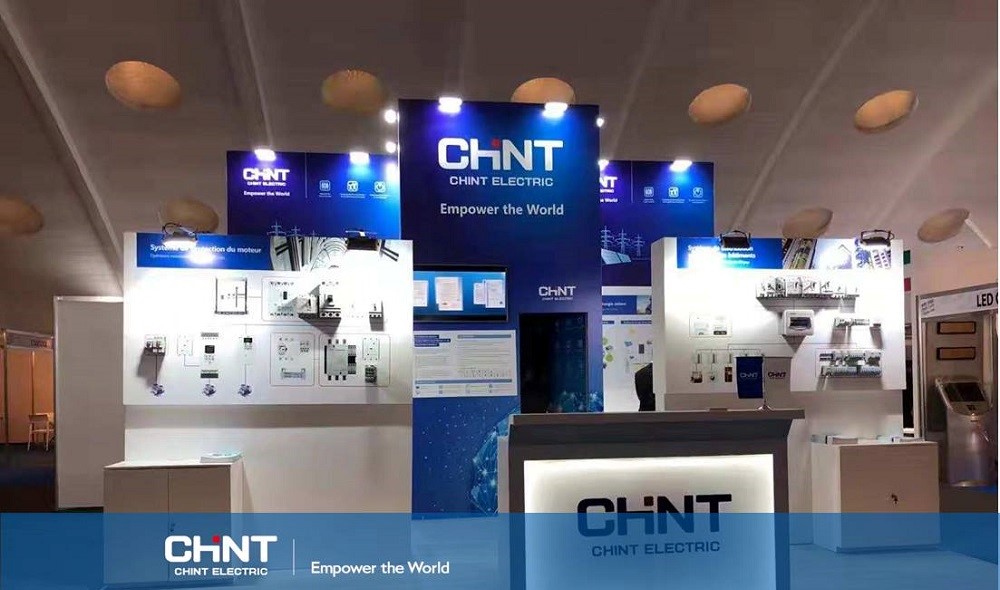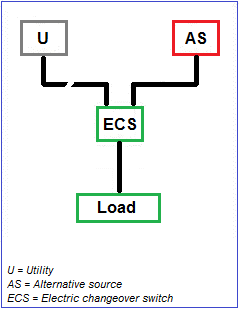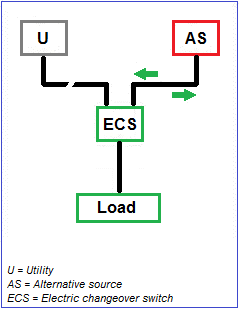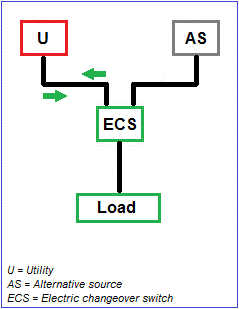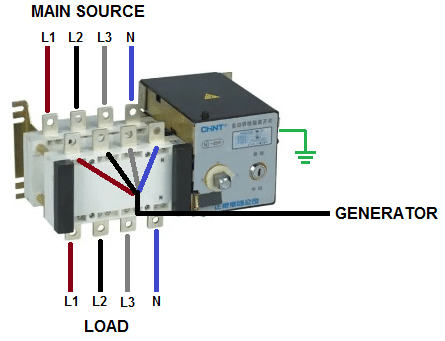Table of Contents |
When the main power supply to your home or business goes out, you need to switch in a quick and controlled manner to an alternative source of electricity.
You can do this by using a changeover switch or transfer switch.
With this guide, you will learn how an electrical changeover switch works, the advantages of this type of device, and how to install it quickly and easily.
What is a Changeover Switch Used For?
A changeover switch is an electrical switch that allows a load to be changed from one electrical source to another and vice versa, either manually or automatically.
When you install a generator at your home or business, you should also install a generator changeover switch so that the generator can be turned on quickly when a power failure occurs.
On the other hand, changeover switches can also prevent electrical accidents from occurring on the side of utility employees by making an electrical current move within the correct limits.
Transfer switches also ensure that power sources are properly isolated when not in use.
Although there are several types of electrical switches, the main feature and advantage of changeover switches is their ability to transfer an electrical load to an alternative source, such as a generator, quickly, safely, and efficiently.
On the other hand, electrical changeover switches have a wide variety of applications, be they simple home applications or critical business and industrial applications.
In fact, many industries have large and complex electrical systems with multiple generators and access points to connect and disconnect from the main grid as needed.
Some examples of use cases are:
- Telecommunication and data networks
- Factories and industrial processes
- Hospitals and healthcare facilities
- Educational facilities
- Malls
- Warehouses
- Small and medium-sized businesses
How does 3 Phase Changeover Switch Work?
This section discusses in detail how a changeover switch works. It should explain the device’s function and provide diagrams or visuals to illustrate its purpose better.
In an emergency power supply system (EPSS), a transfer switch can change the flow of electrical energy from the primary source to an alternative backup source – such as a generator – when a power failure occurs.
The device isolates the alternative power source from the main source for the duration of the power failure or to prevent a possible overload.
When power is restored to the main source, the device can switch the flow of electric power back to the main source.
Basically, the switch acts as a bridge connecting the two electrical sources by switching its contacts so that electricity will flow from the alternative source if the main source is not providing enough electrical power.
This change in contacts can be done manually or automatically, depending on the type of switch used.
An automatic changeover switch has the ability to detect when a fault or restore occurs on the primary source and automatically switch between the two sources as needed.
Transfer switch detects a power failure and automatically commands the generator to turn on.
The generator is turned on, and once the switch detects its operation, it causes the generator to supply power to your home or business
When the main supply of electricity is restored, the transfer shuts down the generator.
Typically, changeover switches are used in three different ways:
- To switch between a utility service and a generator
- To switch between different generators
- To switch between different network service entries
What are the Different Types of Generator Changeover Switches?
There are different models of changeover switches, but in general they can be classified into two main types:
- Manual changeover switches, such as the CHINT NH40S model, can be used as the main switch or master switch in relatively high-end systems.
- Automatic changeover switches, such as the CHINT NH40SZ model, can realize automatic and manual changeovers between normal and backup power in conditions requiring high-quality power supply control.
Manual Changeover Switch
Manual transfer switches have to be manually operated in order to change from one power source to another. This is usually done using a lever located on the side of the switch, although there are also models that work with an electronic button.
The switching mechanism moves a connector within the switch from one position connected to one source of electricity to another position connected to an alternate source.
Manual switches are simple devices that are fairly easy to operate and install, as well as being low cost and having a small and compact design.
In addition, manual switches are also available for a wide variety of applications in different fields, such as:
- Illumination and security systems
- Residential complexes
- Manufacturing industry
- Automobile industry
Automatic Changeover Switch
These devices have intelligent electronic control mechanisms that can decide when to activate the switch without the need for human intervention.
The operation of these switches is through a series of relays and other solid devices that are responsible for monitoring the rises and falls of voltage in the electric utility.
If this system detects any drop in voltage, it immediately sends a signal to the generator to start.
When service is restored to the main grid, the switch automatically switches and shuts down the generator.
These switches can be programmed to work according to a series of customizable parameters. This feature makes them quite versatile and appropriate devices for applications that require a critical level of reaction and safety in the event of electrical failures.
Some examples of applications are:
- Data and financial networks
- Critical industrial processes
- Healthcare facilities
- Warehouses
How Do You Wire an Electrical Changeover Switch?
In this electrical wiring installation guide, you will see in detail how the wiring of a three phase changeover switch should be connected to the electrical supply panel of your home or business and to the main panel of your electrical generator.
These instructions apply to both manual and automatic changeover switches. The only difference is that one device works manually and the other automatically.
In the example below, we are using a CHINT three-phase automatic changeover switch model NH40SZ, which is a type of electric changeover switch quite common in homes and businesses.
The steps are as follows (see the image below):
- Notice that the switch has four terminals on each side
- These terminals correspond to the three-phase utility power (L1, L2, L3, N)
- The four rear upper terminals are connected to the main electrical network
- The four frontal upper terminals are connected to the generator
- While the four bottom terminals are connected to the load
- Both the upper and lower terminals must be connected in parallel, as shown in the image
- For security reasons, it is also important to connect the grounding in the body of the switch
- Finally, you must connect the load terminals to the main incoming terminal of your home or business.
Wiring an electrical changeover switch
Conclusion
Power failures can have serious consequences for both your home and business. Fortunately, these problems can be avoided by installing a generator and a changeover switch.
However, choosing a quality electric changeover switch is essential to ensuring that the entire electrical circuit works safely and efficiently. CHINT Global offers a variety of high-quality generator changeover switches to meet different types of needs. If you want more detailed information about our electrical switches or similar products, please checkout our catalog here.




